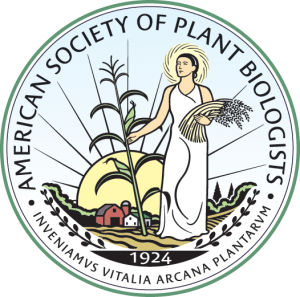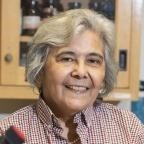Pioneer Member
DONORS
Latanya Hammonds-Odie
John Harada
Ann Hirsch
Robert Last
Michael Summers
Anonymous Donor
TESTIMONIALS
Latanya Hammonds-Odie – For me, MariaElana Zavala has been a stellar example of how to excel in science, while doing work about which you are most passionate. MariaElena is also passionate about mentoring, first and foremost. I consider her one of my most trusted mentors.
Ann M. Hirsch – I have known Maria Elena Zavala since we were graduate students at UC-Berkeley. Over the years, we have kept in touch, and I have followed her career progress for some time. The students, who followed Dr. Zavala and me, got their Ph.D. degrees in Plant Biology, but we earned ours in the “old-fashioned” field of Botany. She and I have remained good friends ever since graduate school.
Her Ph.D. research began in plant cell biology with Prof. William Jensen, but later, her research became more developmental in scope following her postdoctoral study with Prof. Ian Sussex at Yale University. Later, she accepted a position at California State University-Northridge, where she continued her plant research, but with a focus more on undergrads. Serendipity brought us together at times in totally unexpected ways. For example, while my husband and I were living in Cambridge, MA doing our respective postdocs, we encountered Dr. Zavala on crutches coming down the street. She explained how she had come to Boston to attend a conference, and her plane slid off the icy runway into Boston harbor. We had read about the accident, but it was total serendipity to run into to our old graduate school friend.
Upon moving back to California, Dr. Zavala and I renewed our friendship. She invited me to speak with the undergraduate students working in her laboratory, and later to talk to MARC and MBRS students. I was always impressed with her absolute passion to do the best for her students as well as her desire to expose them to various types of science in which they could find future careers. CSUN is not a doctoral granting institution, so Dr. Zavala’s trainees have been undergraduate and M.S. degree students. In 1994, the Northridge Earthquake destroyed Dr. Zavala’s laboratory. Luckily, UCLA did not suffer as much damage as CSUN, so Dr. Elma Gonzalez and I offered lab space to Dr. Zavala and her students. Thus, I got to see her more often. This opportunity was cut short when Dr. Zavala’s lab at CSUN was repaired sooner than expected and she went back to Northridge.
Another serendipitous event occurred when Dr. Zavala was doing a sabbatical in Cuernavaca, Mexico at the UNAM and I was there to give a seminar after an invitation from the late Federico Sanchez. She was doing her sabbatical at UNAM and did not know that I knew Federico nor did he know that I knew her. It was great to see her again.
It is only fitting Dr. Zavala be recognized as a Pioneer of the American Society for Plant Biologists. She was the first Chicana to earn a Ph.D. in Botany in the UC system. She is currently a highly respected Professor of Biology at California State University, Northridge (CSUN), and she and her lab group have contributed to the study of plant development, particularly roots. She initiated the Minority Access to Research Careers Undergraduate Science Training in Academic Research (MARC U*STAR), Minority Biomedical Research Support (MBRS) and Bridges to the Ph.D. programs at CSUN, and she directed the MARC U*STAR and MBRS programs. The Ford Foundation, National Science Foundation, US Department of Agriculture, and the National Institutes of Health have funded her research. She has contributed to educational equity issues and has worked on projects to improve science education for K-12 students and to increase the participation of women in science. Maria Elena has served on NIH advisory boards and panels, and reviewed proposals for the NSF, NIH, and USDA. She is a member and has been the chair of the ASCB minority affairs committee. In addition, Maria Elena was a recipient of the Presidential Award for Excellence in Science, Mathematics, and Engineering Mentoring given by President William Jefferson Clinton, and she is also a Fellow of the AAAS. And just recently, she was featured in the NY Times (https://www.nytimes.com/interactive/2022/12/24/upshot/tom-brady-of-other-jobs.html) with many other distinguished “older folks”. How many plant scientists have been highlighted in this prestigious newspaper? In summary, I cannot think of anyone more worthy and qualified to be an ASPB Pioneer. She has gone above and beyond the qualifications expected in respect to our society, her service to science and the minority community, and I am proud to have known her these many years and am extremely pleased to support this recognition of her contributions to the society.

